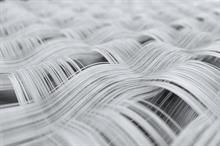
The researchers integrated the sensor into a pair of athletic leggings, allowing wearers to see in real-time when they are approaching their limit and when they should take a break. The sensor is made of a special type of yarn that measures the effect of exhaustion on a person's body movements, such as shortening strides and irregular movement patterns, ETH Zurich said in a press release.
“Since the sensor is located so close to the body, we can capture body movements very precisely without the wearer even noticing,” said Menon.
The sensor's structure is unique, with an inner fibre made of a conductive, elastic rubber wrapped in a spiral around a rigid wire clad in a thin layer of plastic. When the sensor is integrated into the thigh section of a pair of stretchy running leggings, the fibre stretches and slackens at a certain rhythm as the wearer runs, altering the electric field and capacitor's charge. This allows the sensor to capture body movements precisely without the wearer even noticing.
“These two fibres act as electrodes and create an electric field. Together, they form a capacitor that can hold an electric charge,” said Tyler Cuthbert, a postdoc in Menon’s group.
The researchers observed runners wearing athletic leggings equipped with the sensor and recorded how the electric signals changed as the runners got more tired. They then turned this pattern into a model that can predict exhaustion levels, which can be used for their novel textile sensor.
To enable the sensor to send electrical signals wirelessly to a smartphone, the researchers equipped it with a loop antenna made of conducting yarn sewn directly onto the leggings. The electrical signal travels from the sensor to the antenna, which transmits it at a certain frequency capable of being read by a smartphone. The wearer's movements create a signal pattern with a continuously fluctuating frequency, which a smartphone app then records and evaluates in real-time.
The researchers are currently working to turn their prototype into a market-ready product and have applied for one of ETH Zurich's Pioneer Fellowships to help achieve this goal. As per Menon, potential applications of the sensor could go beyond sports to the workplace to prevent exhaustion-related injuries, as well as in rehabilitation medicine.
Fibre2Fashion News Desk (DP)

